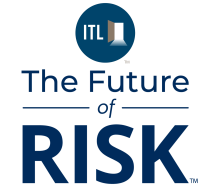Organizations require a robust risk management framework for sustained growth. That means developing a structure that considers all risk aspects, from macroeconomic factors to credit and operational issues. Today's risk management framework also leverages the latest technological advances to create procedures and guidelines for managing those risks. Strategies to achieve the goal of balanced risk management include investing in technologies that can identify and assess both immediate and future risk factors, establishing thresholds based on the organization's appetite for risk, identifying and monitoring risks that could breach this framework, incorporating those risks into strategy development, and executing those strategies effectively.
Use of artificial intelligence in risk management
Artificial intelligence (AI) and complex machine learning models allow for a more dynamic financial prediction framework, integrating real-time and cross-domain data. AI may not have been created with risk management in mind, but the technology is tailor-made for predicting and mitigating financial threats, aiding in improved decision-making, and providing protection and safeguards for various asset classes. Over a 10-year period ranging from 2022 to 2032, the size of the global AI risk management market is predicted to more than quadruple from $1.7 billion (2022) to $7.4 billion by 2032—a compound annual growth rate (CAGR) of more than 16%. Increased trust in technology is the most significant driving force, with previous ethical misgivings easing and a general improvement in quality and trustworthiness in emerging models.
Predictive analytics enable companies to foresee, prepare, and ultimately lessen the potential impact of previously unexpected scenarios, with the financial crisis of 2007 and 2008 as the most recent and relevant example. During the crisis, a clear correlation emerged between a skyrocketing unemployment rate and an increase in defaulted mortgage payments. Now organizations can build and update models that analyze key metrics during economic unrest or uncertainty, letting those businesses implement mitigative or protective measures. More routine, everyday examples include strategic decision-making in offering loan terms, as underwriters can use the model to better understand the loan's expected performance, net present value (NPV), probability of default, and other critical measures. Traditional models continue as the industry's standard, but increasingly dynamic modeling facilitates real-time updating.
Meanwhile, an industry as data-driven as insurance quickly adapted to the AI era, with the new technology contributing to everything from crafting individualized policies to automating underwriting procedures. Even claim processing, traditionally identified as the top source of customer frustration with the industry, has enjoyed advancements in the forms of:
- Claim prioritization. Programs can search for key terms to help adjusters deal with claims in order of their urgency.
- Addressing incomplete or disorganized claims. AI can identify missing information, documentation, or identification from claims and request necessary details from clients via automated emails or chatbots.
- Fraud detection. By identifying patterns of behavior and scanning enormous volumes of data in real time, AI detects and uncovers trends that can indicate an increased possibility of fraudulent activity.
Real-world examples of dynamic risk management
The term "risk management" is typically assumed to pertain to the financial realm, and with good reason. There are predictable and unforeseen risks in every industry, and an AI-related application exists to address just about all of them. For example, a traditional risk management strategy in the industrial world involves prioritizing extensive preventive safety measures to minimize accidents and liabilities. But managers with access to a more dynamic approach can blend preventive and reactive strategies, allocating resources based on actual risk exposure rather than worst-case scenarios. These companies rely on AI-driven predictive maintenance rather than overinvesting in preventive measures. By using sensors to detect wear and tear in machinery, they can intervene only when necessary, reducing unnecessary spending while still managing safety risks effectively.
In the traditional risk management-related financial field, consumer lending organizations are historically hesitant to offer favorable terms or even eligibility to customers with no or limited credit history. These customers ultimately struggle to secure loans in a risk-averse market. Organizations can use a combination of inter-domain data and predictive modeling to analyze the true risk presented by offering loans to these customers. Examples include:
- Bill payments. A history of on-time payments for utilities, rent, and other monthly expenses indicates an individual who is likely to be a good credit risk for the organization.
- Secondary loans. While they aren't included in traditional FICO scores, any record of repaying an advance loan on a paycheck can also reflect positively on an individual's credit.
- Income/spending habits. With access to a person's bank account data, machine learning can quickly identify income patterns and compare them with outgoing expenditures, determining account balances and other relevant information. Pay stubs and W2s can also be immediately scanned and evaluated.
- Social media. Behavioral patterns or online browsing history can be useful in gaining an overall sense of customer behavior patterns and doubles as a useful tool in predicting a customer's creditworthiness.
Lastly, while a traditional risk manager in the insurance industry might purchase comprehensive coverage to protect against potential physical or employee-related risks, those who take a more agile risk approach use AI and real-time data to continuously assess risks and adjust coverage accordingly. In the commercial transportation sector, some companies are leveraging telematics and driver behavior analytics to customize insurance coverage. Instead of a fixed insurance policy, safer drivers receive lower premiums, and riskier ones face dynamic adjustments, optimizing costs while managing exposure effectively.
Of course, the greater role of the insurance industry is the implementation of risk management for other industries–some of which are increasingly related to AI-specific uncertainties. These include handling data, formulas, algorithms, and other machine learning features that, if improperly managed, can result in financial and reputational harm. Through smartphone apps, wearable devices, and GPS monitoring, insurance companies can base premiums on real-time customer behavior rather than a preconceived idea of how much risk that customer's demographic profile presents.
The establishment of a proper risk management framework includes considering business income, credit, operational risk, and uncontrollable factors related to the greater global economic scene, world events, and industry-specific details. By identifying the contributing factors and investing in the latest technological advancements, today's risk managers can position themselves ideally in an increasingly uncertain marketplace.






